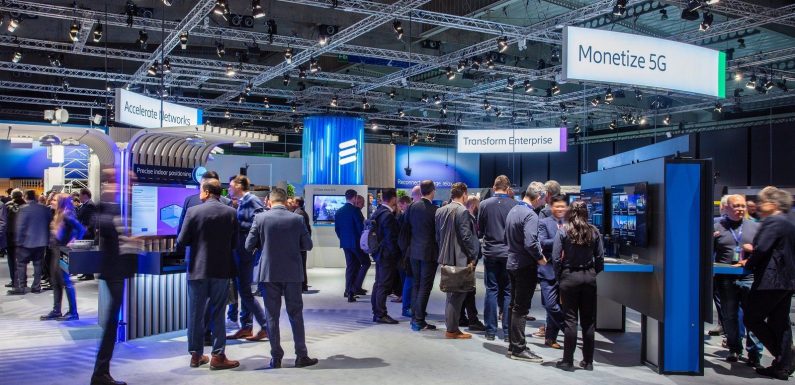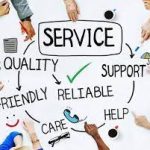
Set up a booth with activities that require attendees to participate, and capture data on their engagement using foot traffic, product demonstrations and QR code scans in order to improve results with each event.
See that your staff are well-schooled in how best to interact with customers, and make sure there is someone available to answer questions. Avoid using industry jargon, because lots of people at a trade show will have only a surface-level understanding of your advanced engineering or manufacturing product.
Plan Ahead
The design of your booth, the information you provide about your products, gifts and advertising materials showing your logos and company’s branding should all match each other to increase the chances of attacling enough sales lead. Don’t disappear in the crowd.
Pay more attention to engagement metrics such as product demos completed and requests for information received than the raw number of lead capture forms you generate, in order to obtain a better sense of how your booth is doing and what action you can take to better manage future events.
Set up a post-show lead follow-up programme to make sure that all the leads that were qualified at the trade show are loaded in the database and sent to the relevant teams within 48 hours of show close. This will help determine if it was worth the investment and justify your next show.
Make a Positive First Impression
Forging fruitful relationships with your fellow exhibitors, which might translate into joint ventures, co-branding initiatives and mentorships, might be possible, and before you know it you might find your business firmly on the path to a meteoric rise, while your brand awareness takes a U-turn to the sky.
By mastering the elevator pitch, making a memorable first impression, actively listening, knowing how and when to use business cards and social media, participating successfully in trade show events, and following up correctly and diligently, a networker will successfully advance his professional development.
As follow-up notes are more likely to be remembered if personalised, they also afford you a timely opportunity to arrange the next step, be it a meeting or a call or, in a toned-down digital age, handwritten letters.
Actively Listen
Being an effective listener in a networking conversation helps you get on other people’s good side, as it’s a sign that you are interested in their viewpoint.
In active listening, when I am listening to someone, I am asking questions, back-channeling, restating and summarising with respect to what the other person has said, to ensure that I understand what they are saying and do not misunderstand them, so that we can communicate effectively, while taking the time to ensure that I am also listening to all of the voices and their contributions at the same time.
Beware speaking industry jargon to the future customers and clients. Chances are they feel quickly offended and patronised. They must feel like they are being talked over by someone who implies their needs and goals are understood. Ask open-ended questions to facilitate conversation to bring you closer to others. Ask open-ended questions that you are truly interested in receiving answers to, so that they can share valuable information. The best types of questions are those that cannot be answered with a simple ‘yes’ or ‘no’. The more you can follow their lead in conversations, the more meaningful the dialogue will be. And the more genuinely curious and caring about their needs and goals, the better your follow-up emails will appear.
Utilize Business Cards and Social Media
Networking takes preparation, personalisation and followthrough to be successful, and businesses must carve out the time to identify the right attendees to help them meet their business goals — otherwise it’s just an expensive party.
See what you can find out about your audience before the show through social media and any relevant industry forums. “Try to target some key individuals or groups before you get there. That way when you meet them at the show you’ll already be one step ahead of the game.”
Take the time to be welcoming Hold that small talk, however tedious it might be. ‘I’m not really a small talker, but you have to endure a little bit of that to get to the goods,’ says Tran, ‘So I’ll strike up the small talk, let their defences fall at the bar, and then continue the conversation afterwards at a more appropriate setting. And that’s how we often land a follow-up meeting.’
Keep your audience involved in what’s happening onstage Sell ideas, but don’t neglect to periodically check in to see if people are still following along. Let them in on what you’re working on, or take their questions and answer them on the fly. ‘We’ll say: “Hey everyone! Now we’re gonna get into the technical session on the product, and maybe you would rather ask us about this and this.” And for the sake of being transparent, it’s nice for your audience to know you’re doing that.’
Book follow-up meetings as early in the day as possible Having a meeting on Monday morning is great, but there’s a chance it could get cancelled or postponed until the afternoon. If your follow-up meeting is scheduled for later in the week, it could end up being postponed all the way to next year’s event. Maybe not that far, but the prospects aren’t great either. Giving out free branded clothes may make an impression welcome and your brand familiar and recognisable for prospective clients. A digital master file of all your business cards makes follow-up after the exhibition much easier and more efficient.
Participate in Trade Show
Events If they produce it, many trade shows publish lists of registered attendees and exhibitors (the other half of the show). These lists are extremely useful data that can dramatically enhance your onsite efficiency. Knowing details in advance about people you want to meet with is a tremendous advantage. Execute as much online research as possible before the show to identify business prospects you want to encounter, and target them directly at the tradeshow – your conversations are much more likely to be relevant and focused.
If you can offer something valuable – a sample product in exchange for a connection, for example, or a short introduction to someone else in the same industry, or maybe a savvy recommendation that you have picked up – you’ll be more likely to stick in your network’s memory.
Make sure to block out time on your schedule to attend seminars, workshops and attendees-only parties linked to the show. Such events offer you the perfect opportunity to network in a more relaxed environment while moving forward with relationships that were forged at the show.
Follow Up
A successful networking campaign involves honing and delivering an elevator pitch, using business cards and social networking, attending industry events such as trade shows, and further following up after the event when the leads are the freshest so as not to waste the spirit of the trade show. Not making one of the many common networking pitfalls, such as having no plan, being too salesy, or not noticing nonverbal cues, helps you to build relationships of quality that can add value to your firm.
But timely follow-up reinforces to your new contacts that you’re interested in them; that you’re someone worth keeping on hand. Aligning with some of the specific conversation points you’d covered reinforces that point as well; it shows them you really heard them. Finally, sharing industry articles or whitepapers related to their goals or challenges are all great ways to demonstrate this.












